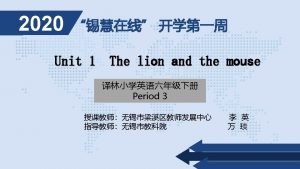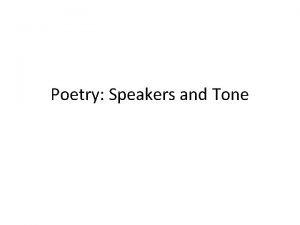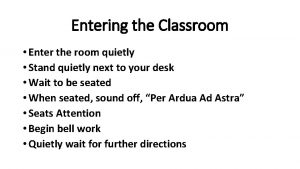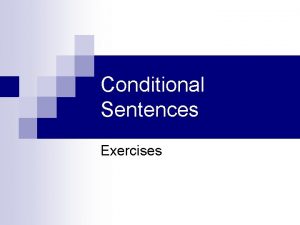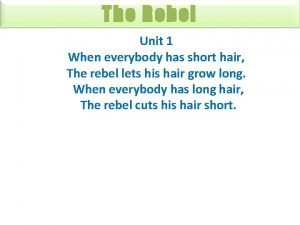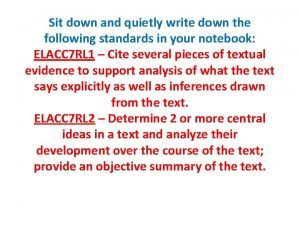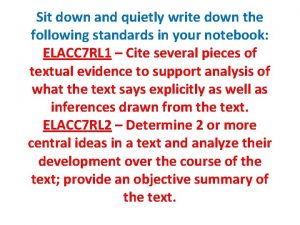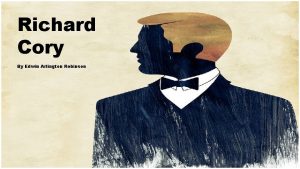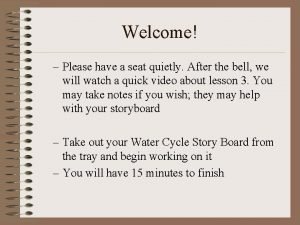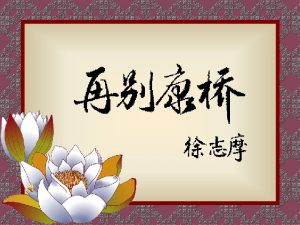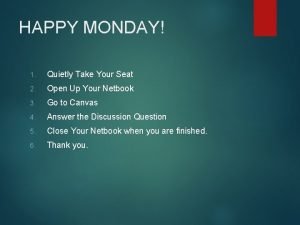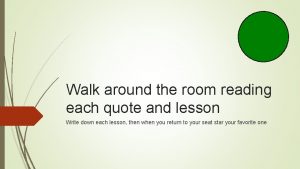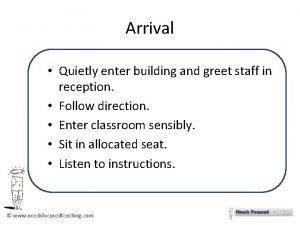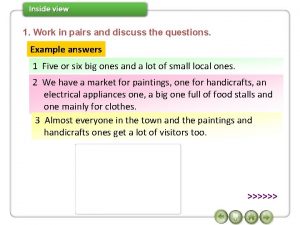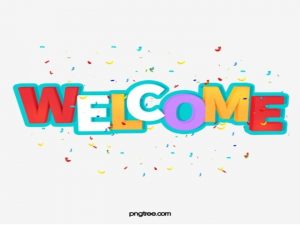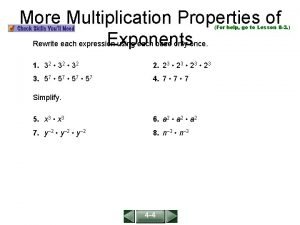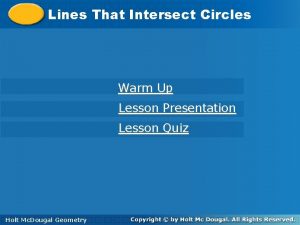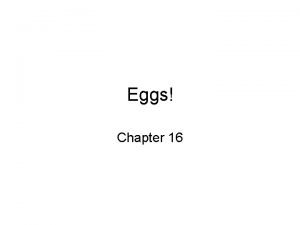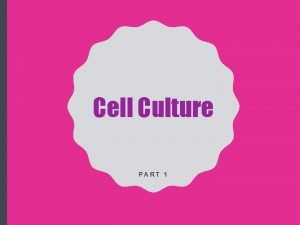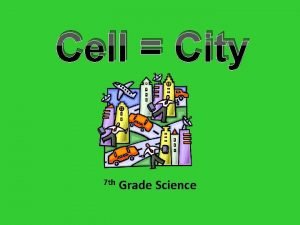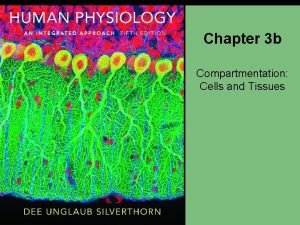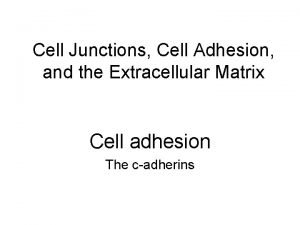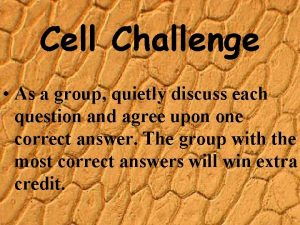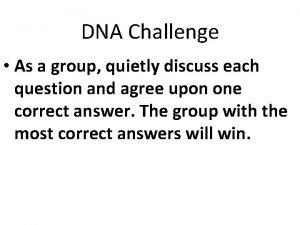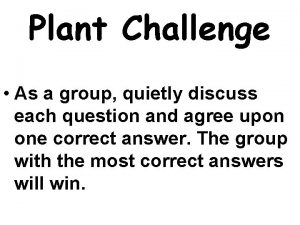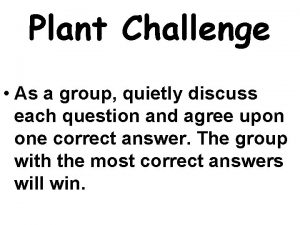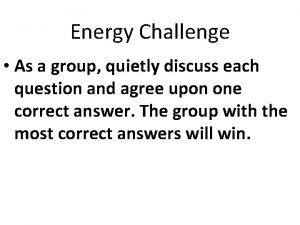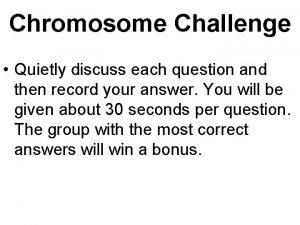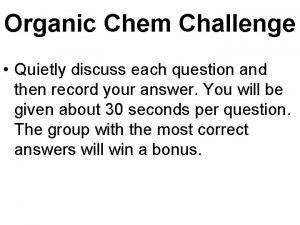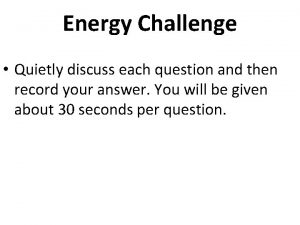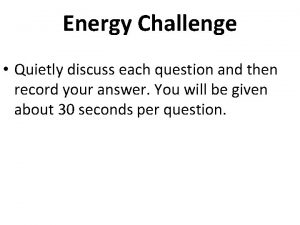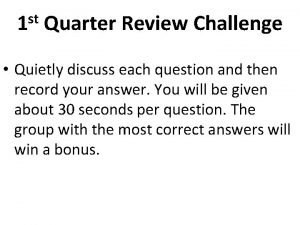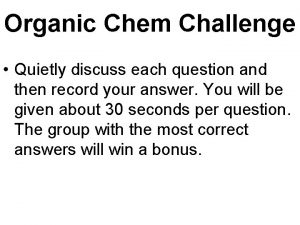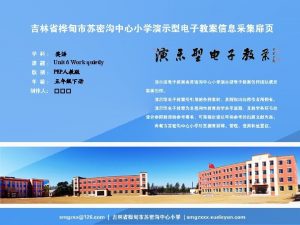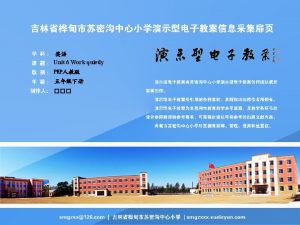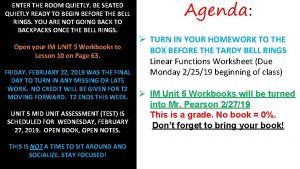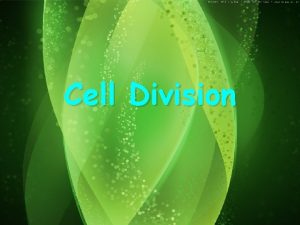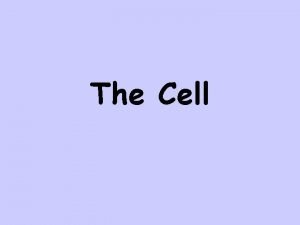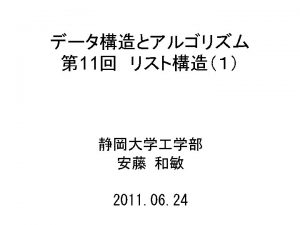Cell Challenge As a group quietly discuss each










































- Slides: 42

Cell Challenge As a group, quietly discuss each question and agree upon one correct answer. The group with the most correct answers will win.

1) What type of transport is this? Be more specific than just writing active or passive transport.

2) What model have scientists developed to describe the arrangement of molecules that make up a cell membrane?

3) Name 2 functions of the lysosome.

4) Identify this organelle.

5) What usually determines the shape of a cell?

6) Which organelle transports proteins towards the Golgi body?

7) Label the type of solution each red blood cell is in. Draw arrows on the cell to show the direction of osmosis.

8) Identify this organelle.

9) Identify this organelle.

10) Using the following choices, properly label the plasma membrane. Embedded Protein Ligands Cytoskeleton Receptor Protein Channel Cholesterol B Phospholipids Carbohydrate Chain F D A C E

11) What type of transport is this? Be more specific than just writing active or passive transport.

12) Which type of receptor is shown in figure 3. 2

13) Identify this organelle and its function.

14) Identify this organelle.

15) Name the sac, proteins are placed within by the Golgi Body before being shipped away.

16) Draw and label the 3 parts of a phospholipid.

17) Which organelle stores water and waste within cells?

18) Name the organelle (tiny dots) and their function in this picture.

19) Which organelle produces the molecule ATP that is required by all cells?

20) Place the steps of protein creation in the order from start to finish. Step A Ribosomes attach and travel along the rough ER Step B Nucleolus creates the ribosome Step D Vesicle protects the protein and releases it from the cell Step C Protein created by the ribosome is passed to the Golgi body Step E Ribosomes exit the nucleus


1) What type of transport is this? Be more specific than just writing active or passive transport.

2) What model have scientists developed to describe the arrangement of molecules that make up a cell membrane?

3) Name 2 functions of the lysosome.

4) Identify this organelle.

5) What usually determines the shape of a cell?

6) Which organelle transports proteins towards the Golgi body?

7) Label the type of solution each red blood cell is in. Draw arrows on the cell to show the direction of osmosis.

8) Identify this organelle. Golgi Body (Apparatus)

9) Identify this organelle. Rough ER

10) Using the following choices, properly label the plasma membrane. Embedded Protein Ligands Cytoskeleton Receptor Protein Channel Cholesterol B Phospholipid Carbohydrate Chain F D A Embedded Protein C E

11) What type of transport is this? Be more specific than just writing active or passive transport. Passive Transport Facilitated Diffusion

12) Which type of receptor is shown in the diagram in figure 3. 2 Intracellular Receptor

13) Identify this organelle and its function. Nucleolus Makes Ribosomes

14) Identify this organelle. Flagella

15) Name the sac, proteins are placed within by the Golgi Body before being shipped away. Vesicle

16) Draw and label the 3 parts of a phospholipid.

17) Which organelle stores water and waste within cells? Vacuole

18) Name the organelle (tiny dots) and their function in this picture. Ribosomes The site of protein synthesis

19) Which organelle produces the molecule ATP that is required by all cells? Mitochondria

20) Place the steps of protein creation in the order from start to finish. Step B Nucleolus creates the ribosome Step E Ribosomes Step A Ribosomes exit the attach and nucleus travel along the rough ER Step C Protein created by the ribosome is passed to the Golgi body Step D Vesicle protects the protein and releases it from the cell
 Amateurs discuss tactics professionals discuss logistics
Amateurs discuss tactics professionals discuss logistics Fallon sherrock smoking
Fallon sherrock smoking Quietly happy meaning
Quietly happy meaning Examples of adverbs modifying verbs
Examples of adverbs modifying verbs Speaker poem
Speaker poem Enter quietly
Enter quietly 1 complete the sentences
1 complete the sentences When everybody has long hair the rebel
When everybody has long hair the rebel Sit down quietly
Sit down quietly Sit down quietly
Sit down quietly Richard cory figurative language
Richard cory figurative language Enter quietly
Enter quietly Solute solvent
Solute solvent Leave quietly
Leave quietly Awubis subordinating conjunctions
Awubis subordinating conjunctions Britney spears characters
Britney spears characters Read the room quote
Read the room quote Enter quietly
Enter quietly Speaking work in pairs discuss the questions
Speaking work in pairs discuss the questions Work in pairs and discuss the questions why do you think
Work in pairs and discuss the questions why do you think Rewrite each expression using the properties of exponents
Rewrite each expression using the properties of exponents Identify each line or segment that intersects each circle
Identify each line or segment that intersects each circle Egg structure with labels
Egg structure with labels Cell city worksheet
Cell city worksheet Advantages and disadvantages of diaphragm cell process
Advantages and disadvantages of diaphragm cell process Prokaryotic vs eukaryotic cell
Prokaryotic vs eukaryotic cell Prokaryotic
Prokaryotic Venn diagram plant and animal cells
Venn diagram plant and animal cells What is a half reaction
What is a half reaction Dry cell vs wet cell
Dry cell vs wet cell Venn diagram for animal and plant cells
Venn diagram for animal and plant cells Middle lamella
Middle lamella Tonoplast
Tonoplast Rough endoplasmic reticulum function
Rough endoplasmic reticulum function Cell wall vs cell membrane
Cell wall vs cell membrane 10 cm dish surface area
10 cm dish surface area Cell line vs cell strain
Cell line vs cell strain Cell city project
Cell city project Primary voltaic cell
Primary voltaic cell Difference between plant and animal cell
Difference between plant and animal cell Cell-cell junction
Cell-cell junction Cell-cell junction
Cell-cell junction What cell organelle is like lysol spray cleaning the cell
What cell organelle is like lysol spray cleaning the cell


